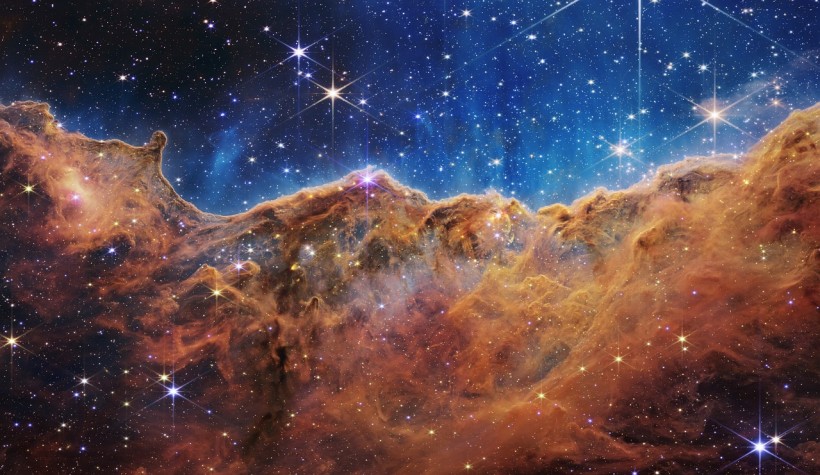Both the Hubble Telescope and the James Webb Space Telescope have made great contributions to the field of astronomy.
James Webb Space Telescope vs Hubble Space Telescope
The Webb telescope can actually be considered Hubble's scientific successor, as its scientific goals were driven by Hubble's results. While the Hubble was optimized for visible and shorter UV light wavelengths, the JWST maximizes infrared technology, enabling a deeper view of the universe from an infrared lens.
There are several galaxies, nebulas, and the like that both telescopes have captured. Despite having the same object of focus, the images captured by the two telescopes are completely different from each other. Let's take a deeper look and compare the shots taken by both the Hubble and Webb Telescope
Southern Ring Nebula
About 2,000 light-years away in the constellation Vela, the spectacular Southern Ring Nebula resides.
— Hubble (@NASAHubble) July 6, 2022
In this #HubbleClassic image, a dying star ejects a cloud of gas expanding outwards at nine miles per second.
Read more: https://t.co/gGnu6uo955 pic.twitter.com/XaxTDYbQWN
The Southern Ring Nebula, which is a huge cloud made of gas and dust that dying stars expelled, is roughly 2,500 light years away. It was through the JWST's shot that it was revealed that a dust cloak covered the dimmer star situated at the center.
SMACS 0723
The first full-color image from NASA's James Webb Space Telescope shows the galaxy cluster SMACS 0723, known as Webb’s First Deep Field, revealing the most detailed glimpse of the early universe ever seen https://t.co/IpbLuOzG92
📷 NASA/ESA/CSA pic.twitter.com/hIqDtgnhI8— Reuters Pictures (@reuterspictures) July 12, 2022
Situated 4.6 billion light years away, this cluster in the far universe consists of thousands of galaxies. According to NASA, the composite image of Hubble takes two weeks to pull off. On the other hand, it only took the James Webb Space Telescope 12.5 hours.
Carina Nebula
Carina Nebula
— Dave Brown (@dave_brown24) July 12, 2022
Left: Hubble
Right: JWST pic.twitter.com/u68R2fFflv
The Carina nebula is situated at the edge of the NGC 3324 region where stars form. It is around 7,500 light years away. JWST's shot reveals areas of star formation that were previously invisible.
Stephan's Quintet
Seen here in visible & near-infrared light by Hubble, this image of Stephan’s Quintet was taken in 2009: https://t.co/1goiRvQVQ1
— Hubble (@NASAHubble) July 12, 2022
Below, learn about @NASAWebb’s powerful infrared view of the same galaxies! ⬇️ Wow wow wow! 🤯 https://t.co/EOkYeFsrho pic.twitter.com/Y2LpDbkuua
A 5-for-1 #BlackHoleFriday deal? Shown here is Stephan's Quintet. While the five galaxies are the focal point, this Webb image also reveals outflows driven by a supermassive black hole in one of the galaxies in never-before-seen detail: https://t.co/auwzcpTq7K pic.twitter.com/K7z4fAcpT8
— NASA Webb Telescope (@NASAWebb) November 25, 2022
Stephan's Quintet covers five galaxies that are roughly 40 million to 290 million light years away. JWST's shot of this cosmic wonder is its largest one so far, as the image covers around one-fifth of the diameter of the moon. The composite of Webb consists of nearly 1,000 different images. It reveals novel details regarding the interaction of the galaxies.
Pillars of Creation
What better way to mark #NewFriendsDay than with this new view?
— Hubble (@NASAHubble) October 19, 2022
One of Hubble’s most iconic shots now has a complementary companion from our friend @NASAWebb!
This star-forming region is known as the Pillars of Creation, and shows a small region of the Eagle Nebula. pic.twitter.com/3FMoH0ro0P
The Hubble Space Telescope first captured the Pillars of Creation back in 1995. It then revisited the area back in 2014 to showcase a wider and sharper view in visible light. The JWST then took another snap of the scene and enabled astronomers to look deeper into the dust found in this area of star formation.
Check out more news and information on Space in Science Times.















